Next week is Hot Chips 2024, and we just got two pieces of equipment in the STH studio. First, we got the new Ampere AmpereOne A192-32X, a 3.2GHz 192-core Arm CPU. Second, we got the Canon R5 MkII that was released this week. It was time to take the new Canon eye-tracking auto focus for a spin with the newest chips. What we found was that Ampere is doing something very different from its cloud-native processor rivals.
This is Ampere AmpereOne A192-32X a 192 Core Arm Server CPU
Earlier this year, we started our Cloud Native Efficient Computing is the Way in 2024 and Beyond piece. There we previewed the Ampere AmpereOne CPU, but we had yet to see one outside of static demos. AmpereOne is a big deal. First, it is a custom core from Ampere, not a licensed Neoverse core like the Altra family was. There are also some important new features on AmpereOne like nested virtualization and more that were simply absent on the Altra/ Altra Max lines. Finally, the platform is much more modern with DDR5 and PCIe Gen5.
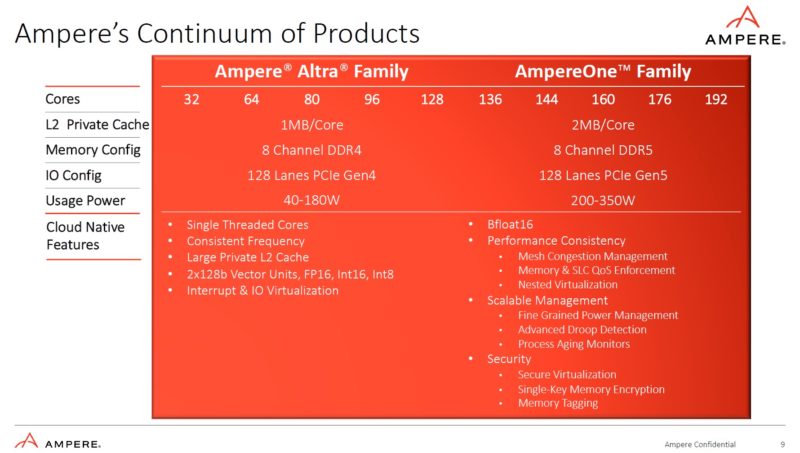
At the start of 2024, our family of current-generation cloud native processors looked like this with two 128-core options in the AMD EPYC Bergamo and the Ampere Altra Max.
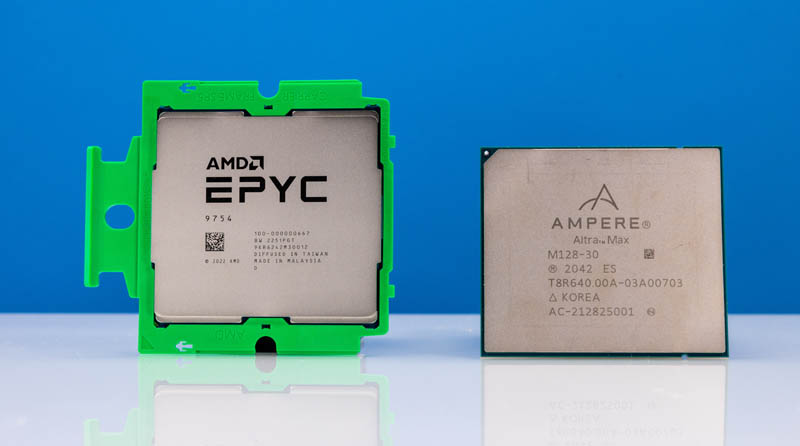
Now we might look at this as the current generation of cloud native processors. We added the AMD EPYC Siena since one could argue that as a Zen 4c CPU and being designed for low power single socket applications, it might fit many of those use cases despite only scaling to 64 cores. We still have the AMD EPYC 9754 Bergamo part since Turin-Dense will not launch until Q4. We now have the AmpereOne processor as well as the Intel Xeon 6700E Sierra Forest line.
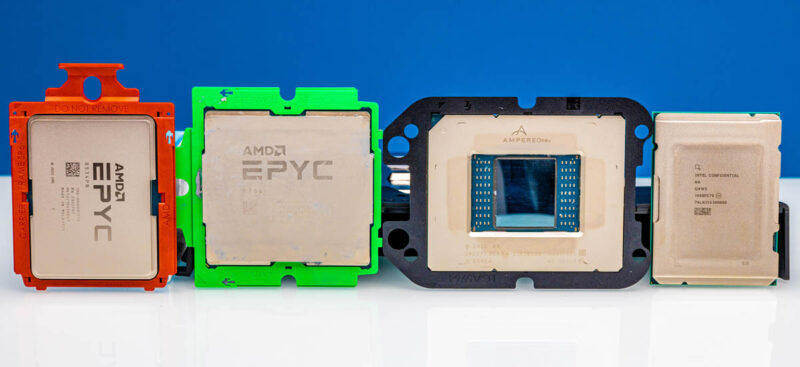
With 192 Arm-based custom cores, we can see that the AmpereOne is on the scale of the AMD EPYC SP5 processors, and much larger than SP3 and SP6 CPUs. The pin count for Ampere is much closer to the SP5 platform than the SP6 platform from AMD.
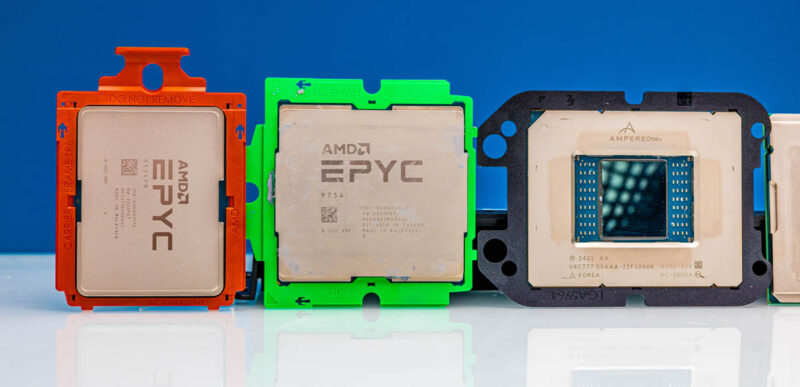
Ampere also has a carrier guide frame around its CPU. This helps the chip fit nicely into the LGA5964 socket, which we will show on the next page.
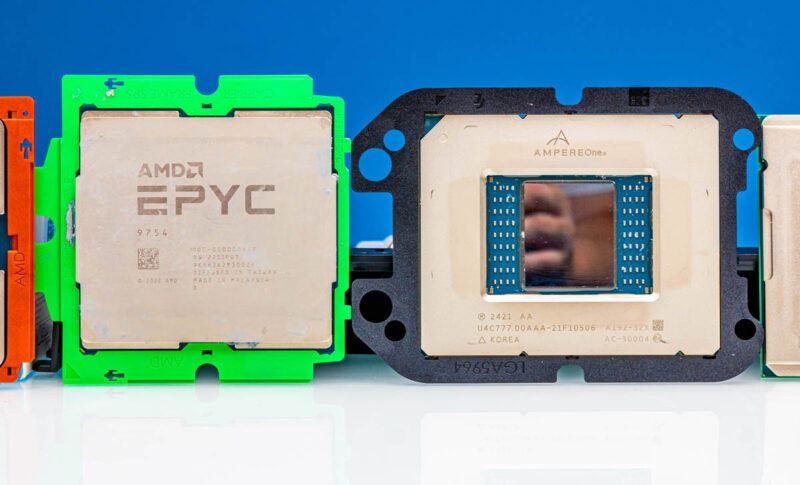
While many are going to compare this to the current Intel Xeon 6700E line, like the Intel Xeon 6780E, those comparisons are a bit strange at the moment. Ampere has 192 cores that get about the same performance on SPECrate2017_int_base as Ampere, but using 144 cores. The Ampere parts cost only about half as much at their list prices. Power wise, Ampere has a higher TDP, but actual usage power is a bit different.
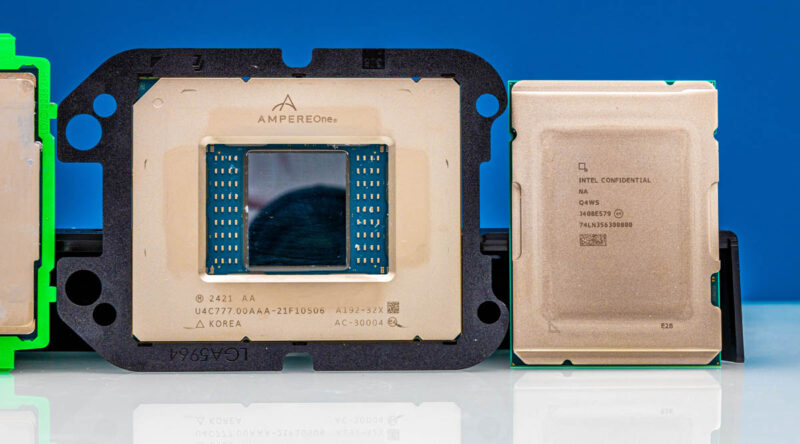
Is the Intel chip really the competitor to AmpereOne given that we know that this is Intel’s small socket Xeon 6 solution, not the company’s 288-core Sierra Forest that is coming? Perhaps. The benchmarks are still running, but for those who think that it is no contest, that is now a silly stance to take.
We will get more into that in the full review, but for now, let us get to the question many are probably wondering: What is going on with that AmpereOne packaging?
AmpereOne Hybrid Thermal Solution
When we pulled the heatsink off of our Supermicro test system, this is what we saw. In the photos above, you can see me taking photos in the reflection off of the main compute die. That die is really for the compute cores.
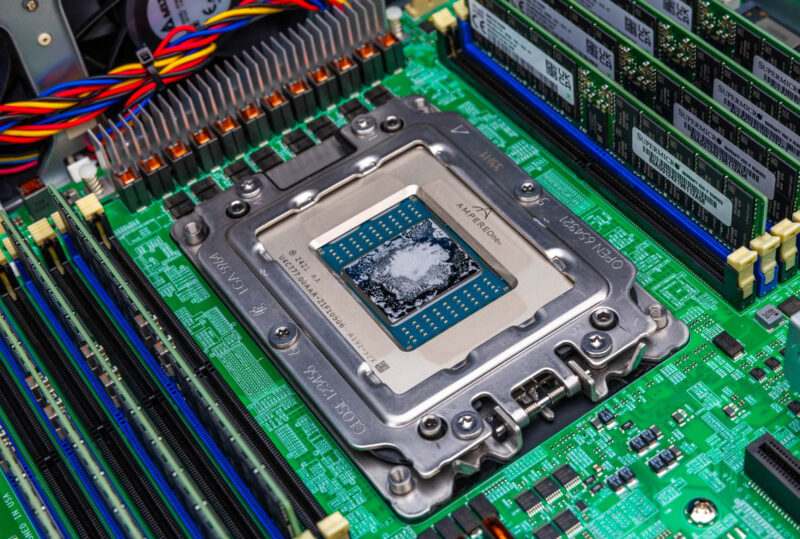
Looking at a photo of the heatsink when we removed it provides a bit more color on what is happening. The main compute die does not have a traditional heat spreader. The memory I/O dies on the sides as well as the PCIe I/O dies each use the heat spreader that goes around the main compute die.
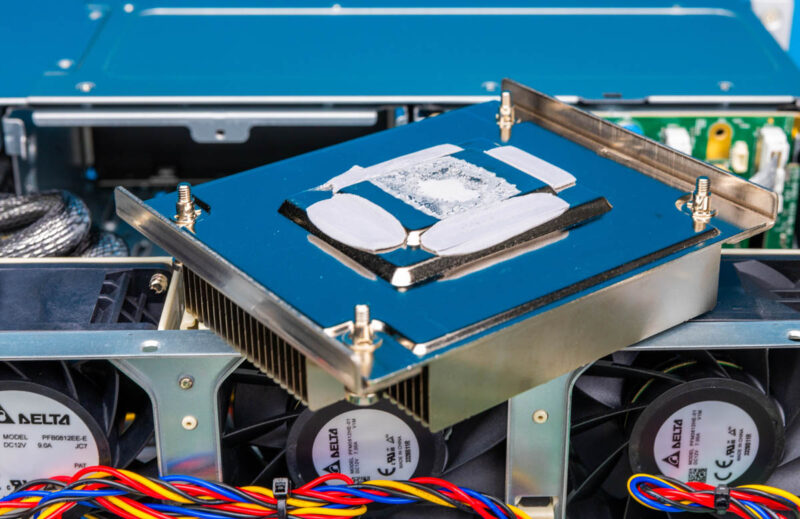
Our heatsink thus has four blobs of thermal paste and three different levels (two for contacting the CPU.) There is no uniform application here. It is always a bit scary to apply thermal paste and a cooler when there is no heat spreader, as we learned with the NVIDIA P100 install in 2018. This was nowhere near as scary as the CoWoS installation, but not having a big uniform heat spreader was still a bit scary. As a fun aside, the AmpereOne A192-32X has a 400W TDP while the NVIDIA P100 SXM2 module only had a 300W TDP. Modern low-power cloud native CPUs are now in the range of a 2018-era NVIDIA V100 32GB GPU which is a fun thought.
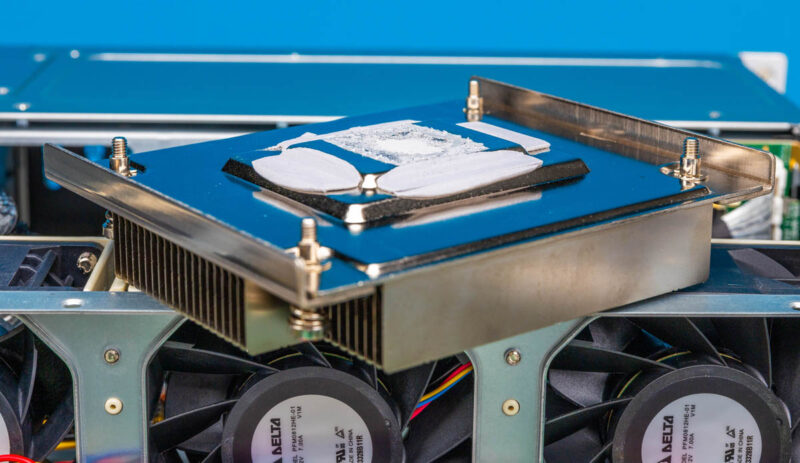
Next, we are going to take a moment to look at the AmpereOne socket since many are probably wondering how this gets installed.

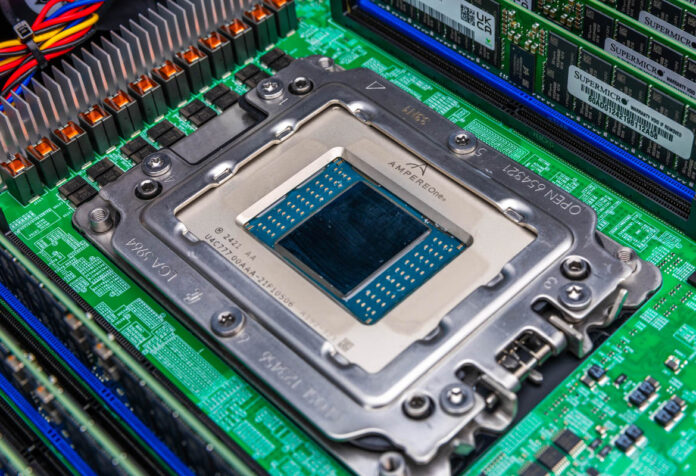
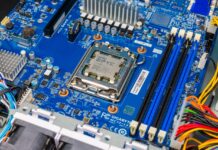


A lack of SVE is a bit disappointing. Even at VLEN=128 it would be really quite nice to work compared to NEON thanks. Amper Altra was Neoverse-N1, AmperOne is supposedly a custom core from scratch, so maybe they didn’t want to complicate things too much. (Also SVE can be memory bandwidth intensive, so with so many cores, and only 8 memory channels, it would not scale fully in many workloads, but still there are advantages to have it than note, so I hope next iteration will have SVE).
Other than that pretty interesting.
Direct die cooling and a multi-level (I assume) vapor chamber heatsink? That’s not going to be cheap to manufacture. An interesting design nonetheless.
Kyle wrote “Direct die cooling and a multi-level (I assume) vapor chamber heatsink? That’s not going to be cheap to manufacture.”
Could those heatsinks be more expensive than water cooling?
Somehow the exposed die reminds me of the Pentium III Coppermine and Athlon Thunderbird processors except bigger. My recollection is the Pentium and Athlon also did not support SVE and similarly were a little short on memory bandwidth.
“This is Ampere AmpereOne A192-32X a 192 Core Arm Server CPU” is difficult to parse, gramatically incorrect, and AI generated?
How about: “The Ampere AmpereOne A192-32X: a 192 Core Arm Server CPU”?
about 20$ per heatsink to manufacture